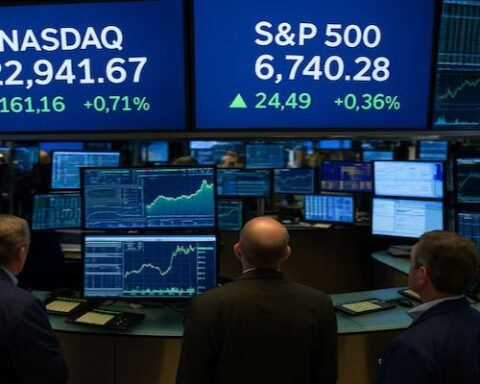After months of relentless growth and record-breaking highs, global markets are beginning to cool — and nowhere is this more evident than in the technology sector. Investors who once poured billions into high-growth tech firms are now showing signs of caution, raising fears that the world might be witnessing the early tremors of another tech bubble burst.
The correction began subtly, as leading indexes like the NASDAQ and S&P 500 started to dip amid weaker earnings reports from major tech giants. Companies such as Apple, Tesla, and Meta have all reported slower revenue growth and shrinking profit margins, reflecting a wider cooling in consumer demand. Even once-invincible chipmakers like Nvidia and AMD are facing headwinds, as the global semiconductor boom that fueled AI development starts to stabilize.
The primary driver behind this market pullback is investor fatigue and tightening global liquidity. Central banks across the world — including the U.S. Federal Reserve, the European Central Bank, and the Bank of England — have signaled that interest rates will remain high for longer than previously expected. This policy stance has reduced the flow of cheap money that once drove speculative investments into startups, crypto assets, and high-growth tech ventures.
Another contributing factor is the shifting macroeconomic landscape. Inflation remains stubbornly high in key economies, and geopolitical tensions — from the Middle East to Eastern Europe — are weighing heavily on market sentiment. These uncertainties have led institutional investors to adopt a “risk-off” approach, redirecting capital from volatile assets like tech stocks toward safer options such as bonds, gold, and cash reserves.
The once-booming startup ecosystem is also feeling the pressure. Venture capital funding has dropped significantly, forcing many new tech firms to delay IPO plans or cut costs drastically. Layoffs across the tech industry are becoming more common, echoing the downturns of the early 2000s and 2022. The mood in Silicon Valley, once euphoric, is now increasingly anxious as founders grapple with dwindling valuations and cautious investors.
Analysts suggest that this correction was inevitable. Over the past few years, markets were inflated by unrealistic expectations surrounding artificial intelligence, blockchain, and digital transformation. While these technologies continue to evolve and create long-term opportunities, the short-term hype led to excessive valuations that are now being adjusted. “We’re not seeing a collapse — we’re seeing normalization,” said financial strategist Linda Marks of JP Global Insights. “Tech companies are still strong, but investors are finally distinguishing between true innovation and market exaggeration.”
One major signal of this market shift is the recent decline in AI-related stocks. Companies that positioned themselves as leaders in artificial intelligence have seen their share prices drop by 10–20% in recent weeks, as investors reassess revenue timelines and scalability challenges. Despite the revolutionary potential of AI, many firms have yet to turn significant profits, and their high valuations are proving difficult to justify.
The cooling trend is not limited to the United States. In Asia, tech-heavy markets like South Korea’s KOSDAQ and China’s STAR Market have also seen sharp declines. Chinese tech giants such as Alibaba and Tencent continue to face regulatory pressure and sluggish domestic demand, while Japan’s SoftBank struggles to recover from losses in its Vision Fund investments. European tech firms, meanwhile, are battling weaker consumer spending and slower growth across the continent.
Global fund managers are now adopting a defensive posture, favoring diversified portfolios over concentrated bets on tech. Many are shifting focus to sectors like healthcare, renewable energy, and consumer staples — industries that are expected to remain resilient even amid market turbulence.
However, not everyone believes this is a long-term downturn. Some market observers argue that the tech sector’s fundamentals remain solid, driven by continuous innovation in AI, cloud computing, and green technology. They see the current correction as a healthy reset that could pave the way for sustainable growth in the coming years.
Still, for the moment, the mood on Wall Street and beyond remains cautious. The memory of past bubbles — from the dot-com crash of 2000 to the crypto collapse of 2022 — looms large. Traders are watching closely to see whether the latest dip is a temporary cooling or the beginning of a deeper market reckoning.
In the end, the fate of the global tech market may depend on a delicate balance: whether innovation can keep pace with investor expectations. For now, one thing is clear — the era of easy money and unchecked optimism in the tech world has come to a pause. What follows may redefine the next chapter of digital capitalism itself.
























